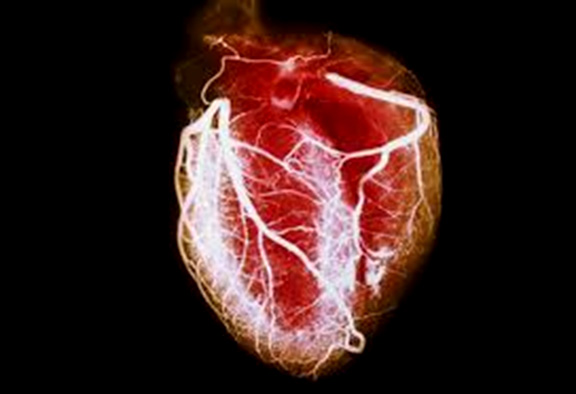
What is a Coronary Stent ?
According to Medical Terminology, “A Stent is a mesh tube placed into a natural passage in the body to counteract a disease induced localized flow constriction”.
In simple terms it is a mesh tube that is used to treat narrow or weak arteries. Arteries are blood vessels that carry the purified blood away from the heart to other parts of the body.
The stent is placed in the artery in a procedure called Angioplasty
Angioplasty restores blood flow through narrow or blocked arteries, by supporting the inner walls of the artery. Doctors may also place stents in weak arteries to improve blood flow and help prevent arteries from blocking.
Usually stents are made of metal mesh, sometimes made of fabric called ‘stent grafts’ which are used in large arteries. Some stents are coated with medicine known as “Drug Eluting Stents”. The medicine is slowly and continuously released into the artery and helps in preventing the artery from being blocked again.
Coronary Heart Disease (CHD)
The most common use of stents is in Coronary arteries, in patients with Coronary Heart Disease (CHD). CHD is a disease in which a waxy substance called plaque builds up in the coronary arteries. These arteries supply the heart muscle with oxygen rich blood. Plaque narrows the coronary arteries reducing the flow of oxygen rich blood to the heart. This can lead to chest pain or discomfort called “Angina”. The build up of plaque can also cause blood clots to form in the coronary arteries leading to “heart attack”.
Doctors may use angioplasty and stents to treat CHD. Angioplasty is a procedure done by an Interventional Cardiologist, in which a thin flexible tube with a balloon or other device is threaded through a blood vessel to the narrow or blocked coronary artery. Once in place the balloon is inflated to compress the plaque against the wall of the artery. This restores the blood flow through the artery to the heart muscles and reduces Angina and other CHD symptoms. A stent is also placed in the treated portion of the artery during angioplasty. The stent supports the artery’s inner walls and reduces the chances of the artery becoming narrow or blocked again. After a stent procedure, the doctor will recommend you Aspirin (blood thinner) and another anti-clotting medicine. These medicines help prevent blood clots from forming in the stent. Taking these medicines for as long as the doctor recommends is important
STENTS help prevent arteries from becoming narrow or blocked again for months or years after Angioplasty, but it is not a cure for “atherosclerosis”(build-up of plaque in the arteries).
It is Lifestyle changes like proper diet, Quitting smoking, losing weight, reducing stress, moderate exercise and treatment of the underlying disease like Diabetes and B.P. etc., which will prevent building up of plaque in the arteries again.
What kind of CHD patients require Stents
A study called “ COURAGE “ (Clinical outcomes utilizing re-vascularisation and aggressive drug evaluation ) published in New England Journal of Medicine (April, 2007 )on 2287 patients with stable coronary artery disease ie., Chest pain but not of sudden onset or particularly worrisome showed as follows:-
Half of these patients were given stents together with drugs and lifestyle modification, while the other half had only drugs with diet and exercise.
After five years, there was no statistical difference between the two groups with regard to death, heart attacks or strokes. The only difference was in the ‘Cost of treatment’. The cost of treatment for patients having stents was costlier by $15000 per stent.
“Stents save lives” But if a person is not having a life threatening cardiac event, he can do without that ‘Stent’.
For many people drug treatment together with diet and moderate exercise can be as effective as having a stent.
In India, MORE THAN THREE MILLION STENTS ARE USED ANNUALLY
Stents are designed to be used if a patient faces artery blockages greater than 70% but doctors in India recommend a stent even if the blockage is less than 30%.
According to many studies conducted abroad, inserting a stent to repair a narrowed artery has no special benefit over the STANDARD MEDICAL CARE in treating CHD with drugs and lifestyle changes. But Doctors in India and abroad continue to insert stents because it makes ‘Business Sense’.
In many Hospitals, the Cardiac Unit generates more than 40% of the total Hospital revenue, so doctors are under tremendous pressure to do more procedures.
The patient who is undergoing the procedure nor the relatives can take a decision whether they should have a stent or not, and look to the attending doctor for advice. The doctor will usually tell them that since they are already undergoing Angioplasty, it would be easier and less costly to insert the stent now . If the patient decides to have a stent later, the whole procedure of catheterization would have to be done again. The procedure would not only be painful and not without risk but also very costly. The result is that patients would always like to take the doctor’s advice and go for the insertion of the stent.
Every one ends up happy. The patient and relatives for doing the right thing. The Doctor for having helped the Hospital in getting the revenue. The Hospital for getting the revenue. And the Stent Manufacturer for selling the ‘Stent’.
S.G.B.Rao, LSW Lifescienceworld
www.lswlifescienceworld.com